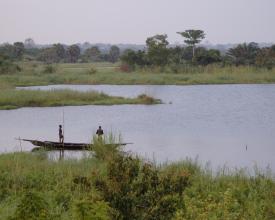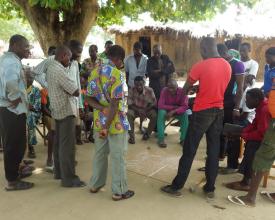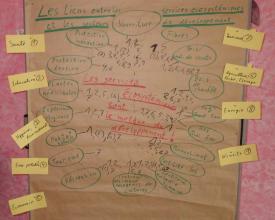
Resilient livelihoods, flood & drought protection through sustainable use of natural resources
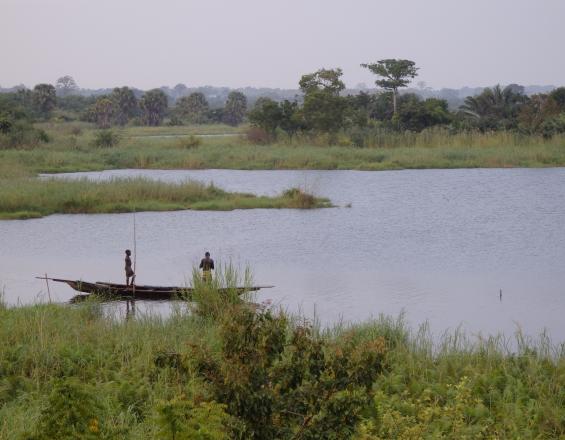
The project "Transboundary Biosphere Reserve (TBR) in the Mono Delta" aims at the conservation and sustainable use of biodiversity and ecosystem services in the Mono Delta while at the same time contributing to the sustainable development of the local communities. The introduction of measures for the sustainable management of forest and fisheries resources contributes to increasing the resilience of local populations in the face of existing climate challenges such as floods and drought.
Context
Challenges addressed
The climate of the area is characterized by a high variability of precipitation, leading more and more to negative effects such as floods, erosion, and resulting siltation of streams. Floods, alternating with periods of drought, cause damage to the local population and their property and increase the risk of crop failure in the area (e.g. the flooding in 2010). The majority of the local population lives below the poverty line and depends heavily on natural resources. Nevertheless, the availability of ecosystem services has been affected by the unsustainable use of land. The importance of ecosystem services for water regulation, flood protection and the livelihoods of the population is scarcely recognized by the administrative authorities. The area is located downstream of the Nangbeto dam, whose management has a major impact on the flow of the river. A second dam (Adjarala), also upstream of the region, is currently built.
Location
Process
Summary of the process
To ensure ownership by the beneficiaries and the sustainability of the approach, the protected areas and their management rules have been established in a participatory manner. The core and buffer zones of these protected areas will be managed by local management associations (Building Block I). In order to integrate individual areas into broader spatial planning, territorial authorities have been trained on the integration of ecosystem services into development planning (Building Block II). This approach allows for better management of the transition zone which will also have a positive impact on the core and buffer zones of the reserve.
Building Blocks
Participatory natural resources management by local actors
Enabling factors
Lesson learned
Integrating ecosystem services into development planning
Enabling factors
Lesson learned
Resources
Impacts
The Mono Transboundary Biosphere Reserve, created in 2016 with support of the GIZ project, covers 3499 km2 along the border of Benin and Togo which is formed by the river Mono. 434 km2 of the reserve are designated as buffer zones, where the focus is on sustainable use of natural resources. Implementation of sustainable resource management activities is still in its infancy. The expected impacts in terms of risk reduction for local populations include: • Securing livelihoods and income-generating activities, which are based on ecosystem services, including fisheries and forest products (game, NTFP, wood energy ...); • Diversification of income generating activities: in the face of a potential decline in agricultural production, caused by extreme weather conditions, alternative activities based on sustainable utilization of forest and fisheries resources could become more important; • Water regulation and improved water availability through sustainable management of forests, mainly riparian / mangrove forests, which improves water retention capacity in the area; • Prevention of river bank erosion: rehabilitation / reforestation of mangroves along the banks will have a stabilizing effect and will reduce erosion and sediment load of the river.
Beneficiaries
The beneficiaries include the two states, the territorial authorities (communes and prefectures) and the local populations as well as their traditional and religious authorities.
Sustainable Development Goals
Story
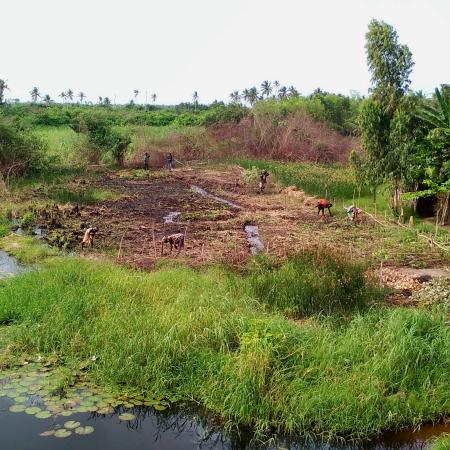
The area of the Mono Delta is regularly subject to flooding. This situation is aggravated by the siltation of watercourses due to the erosion of their banks. However, mangrove planting in the biosphere reserve mitigates the negative impacts of floods on local populations. According to Assion Anani, the president of one of the local management associations in Togo, before, water invaded practically every village on an annual basis. The mangroves planted on the banks of the watercourses stabilize them and prevent their erosion as well as the siltation of the river. Thus, the magnitude of floods and resulting damage to the villages can be diminished. The territorial authorities also benefit from the regulatory function of forests for the protection of infrastructures. Mr. Amavi Joseph Anani, the Mayor of the Commune of Athiémé in Benin, explains that the flooding of the Mono river has already had very destructive impacts on the infrastructure, especially roads. Instead of awaiting heavy investments from the central state, the municipal council undertook to launch the planting of mangroves along the river in order to reduce the impacts of floods. This ecosystem-based measure has proved to be a low-cost solution and is therefore very relevant for a political context where financial resources are rather limited.
